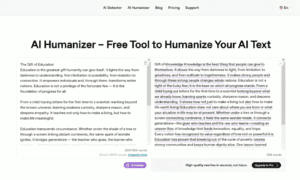In the fast-paced and ever-evolving world of business management, effective management strategies are crucial for sustained success. Whether you’re an entrepreneur, a small business owner, or part of a large corporation, understanding and implementing sound management practices can make the difference between thriving and merely surviving in the competitive landscape. In this comprehensive guide, we’ll delve into key aspects of business management, offering valuable insights and actionable strategies to help you steer your organization towards excellence.
Strategic Planning: Setting the Foundation for Success
Importance of Vision and Mission: A compelling vision and mission serve as the compass guiding your organization. Clearly define your purpose and the direction you want to take, creating a roadmap for success.
SWOT Analysis for Informed Decision-Making: Conducting a thorough SWOT analysis enables you to identify internal strengths and weaknesses as well as external opportunities and threats. This insight informs your strategic decisions, helping you leverage strengths and address weaknesses.
Goal Setting and Objective Alignment: Establishing specific, measurable, achievable, relevant, and time-bound (SMART) goals ensures clarity and focus. Align these goals with your overall mission to foster a sense of purpose among your team.
Adapting Strategies to Market Changes: Strategic planning isn’t static. Regularly review and adapt your strategies to accommodate changes in the market, technology, or internal dynamics, ensuring your business remains agile and responsive.
Effective Leadership: Inspiring and Guiding Teams
Communication as a Leadership Cornerstone: Clear and transparent communication is essential for effective leadership. Keep your team informed, solicit feedback, and create an open environment that encourages collaboration.
Visionary Leadership for Long-Term Success: A visionary leader inspires others by articulating a compelling vision for the future. Foster a sense of purpose among your team members, motivating them to work towards common goals.
Adaptable Leadership in a Changing Landscape: Business environments are dynamic. An adaptable leader navigates change with resilience, adjusting strategies and empowering teams to overcome challenges.
Nurturing a Positive Work Culture: A positive work culture promotes employee well-being, satisfaction, and productivity. Encourage a supportive atmosphere where diversity is celebrated, and innovation is embraced.
Employee Engagement: Maximizing Productivity and Satisfaction
Recognition and Rewards: Acknowledging and rewarding employee contributions fosters a sense of value and motivation. Implement recognition programs that highlight achievements and encourage a culture of appreciation.
Professional Development Opportunities: Invest in your employees’ growth by providing training and development opportunities. This not only enhances their skills but also boosts loyalty and retention.
Work-Life Balance for Well-Being: Striking a balance between work and personal life is crucial for employee well-being. Implement policies that promote work-life balance, reducing burnout and increasing overall job satisfaction.
Open Communication Channels: Establish open channels for feedback and communication. Employees who feel heard and valued are more likely to be engaged and contribute positively to the organization.
Financial Management: Ensuring Fiscal Responsibility
Budget Development and Adherence: Develop a realistic budget that aligns with your business goals. Regularly review and adhere to the budget, ensuring financial resources are allocated efficiently.
Cash Flow Monitoring and Management: Effective cash flow management is vital for business stability. Monitor cash flow regularly, forecasting and addressing potential issues to maintain financial health.
Informed Financial Decision-Making: Base financial decisions on thorough analysis and data. Informed choices, whether regarding investments, cost-cutting measures, or expansion plans, contribute to long-term success.
Leveraging Technology for Financial Efficiency: Utilize advanced accounting software and financial technologies to streamline processes. Automation reduces the risk of errors and enhances overall financial efficiency.
Strategic Marketing: Creating a Strong Brand Presence
Comprehensive Marketing Strategy: Craft a detailed marketing strategy that encompasses online and offline channels. Consistent messaging and branding across platforms contribute to a strong and recognizable brand presence.
Digital Marketing in the Modern Landscape: Embrace digital marketing channels to reach a broader audience. Utilize social media, content marketing, and search engine optimization (SEO) to enhance online visibility.
Analytics for Performance Evaluation: Regularly analyze marketing performance using key performance indicators (KPIs). Data-driven insights enable you to adjust strategies, ensuring optimal return on investment (ROI).
Adaptability in Marketing Approaches: Stay abreast of marketing trends and be willing to adapt strategies. Flexibility ensures your marketing efforts remain relevant and effective in a rapidly changing landscape.
Innovative Technology Adoption: Staying Ahead of the Curve
Continuous Learning and Awareness: Stay informed about emerging technologies relevant to your industry. Continuous learning ensures you can leverage cutting-edge tools to enhance efficiency and productivity.
Integration of Customer Relationship Management (CRM) Systems: Implement CRM systems to streamline customer interactions and enhance relationship management. This technology provides valuable insights into customer behavior and preferences.
Data Analytics for Informed Decision-Making: Harness the power of data analytics to make informed decisions. Analyzing data trends helps identify opportunities, optimize processes, and predict market changes.
Automation for Operational Streamlining: Automate repetitive tasks and processes to increase efficiency. This not only saves time but also reduces the risk of human error, contributing to overall operational excellence.
Risk Management: Mitigating Challenges and Uncertainties
Proactive Risk Identification: Regularly assess potential risks and challenges your business may face. Proactive identification allows for the development of strategies to mitigate and manage these risks effectively.
Scenario Planning for Preparedness: Conduct scenario planning exercises to prepare for potential disruptions. Anticipating different scenarios enables you to respond swiftly and effectively when challenges arise.
Robust Crisis Management Protocols: Establish clear crisis management protocols to guide your team in times of uncertainty. Having a well-defined plan ensures a coordinated response to unexpected events.
Regular Review and Adjustment of Risk Protocols: Risk management is an ongoing process. Regularly review and adjust your risk management protocols to adapt to changing internal and external factors.
Supply Chain Optimization: Enhancing Efficiency and Resilience
Streamlining Processes for Efficiency: Evaluate and optimize supply chain processes to eliminate bottlenecks and reduce costs. Streamlining enhances overall efficiency and ensures timely delivery of products or services.
Building Strong Supplier Relationships: Develop strong partnerships with reliable suppliers. A collaborative relationship fosters trust and ensures a stable supply chain.
Agile Supply Chain Practices: Adopt agile supply chain practices to respond quickly to market changes. Flexibility and adaptability are key to maintaining a resilient supply chain.
Technology Integration for Supply Chain Visibility: Leverage technology for real-time visibility into your supply chain. Monitoring and analytics tools enhance transparency, allowing for proactive decision-making.
Conclusion
In the dynamic world of business, effective management is the cornerstone of success. By integrating strategic planning, strong leadership, employee engagement, financial management, strategic marketing, innovative technology adoption, risk management, and supply chain optimization, you can navigate the complexities of the business landscape and position your organization for sustained growth. The ultimate guide to effective business management strategies empowers you to make informed decisions, foster innovation, and lead your business towards long-term success in an ever-evolving marketplace.



































